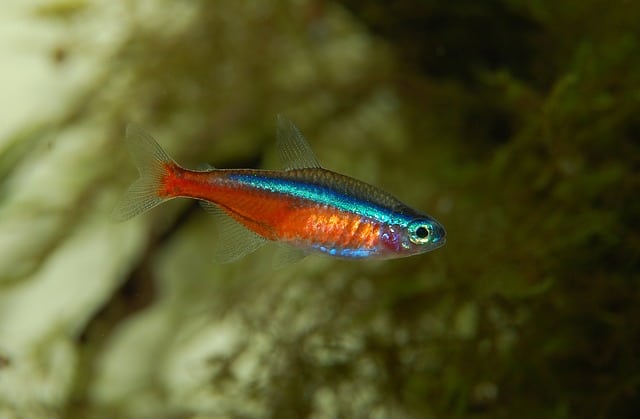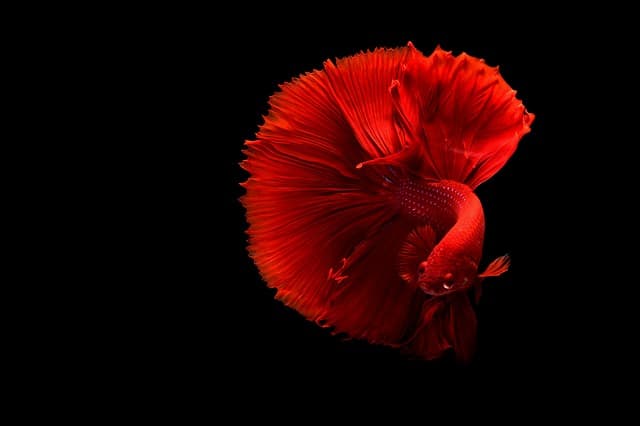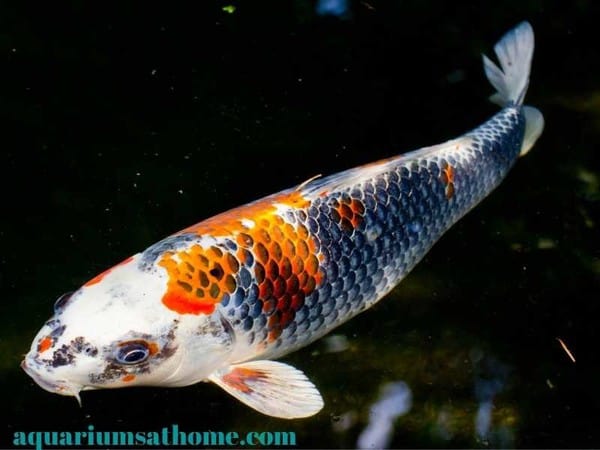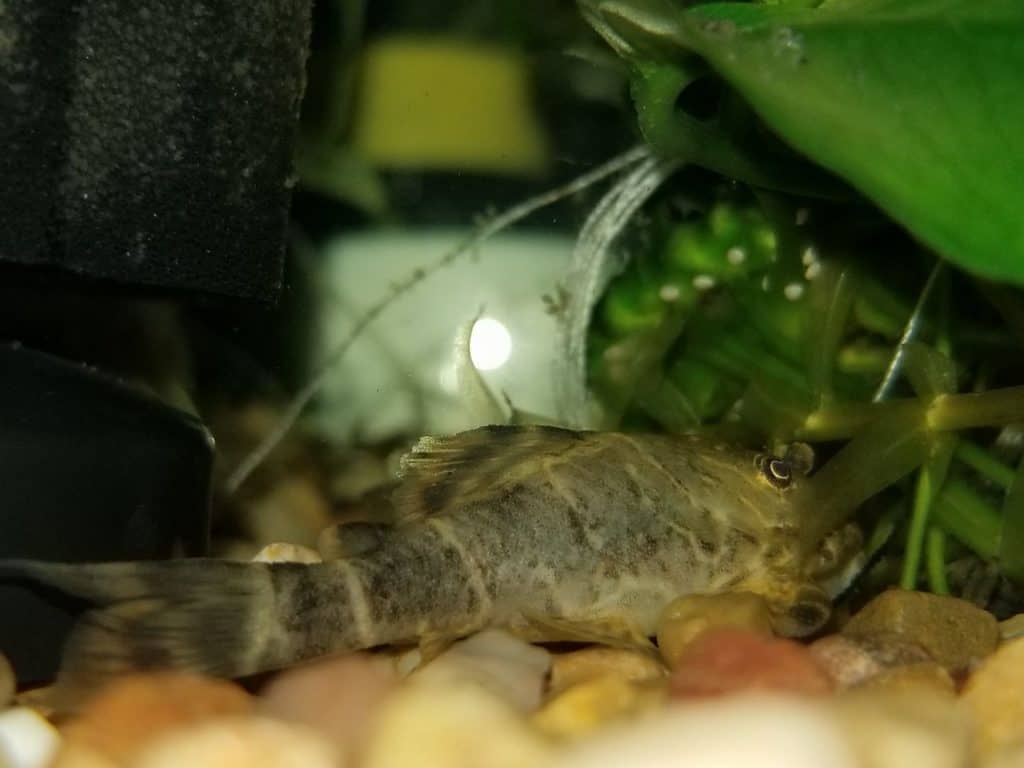Danio fish are highly popular with aquarium hobbyists. They’re great for beginners as they’re low maintenance, hardy and can tolerate a wide range of water conditions. If you’re thinking of keeping danios, you may be curious about their breeding habits and how to tell if a female is pregnant?
Danio fish aren’t livebearers which means they don’t give birth to baby fry. They’re egg-bearers and you’ll know your female is pregnant when her mid-section starts to bulge out. You’ll also notice round protrusions along the sides of the body that become bigger and fatter as time goes on.
Now that you know a female danio fish will display a visibly larger, rounder belly when pregnant, let’s explore this topic further. In this article, I’ll explain how to tell when a danio is ready to lay her eggs, where danios prefer to lay their eggs, and how often they breed.
So, if you’re ready learn more about the reproductive habits of the danio fish, then let’s begin!
How Do You Know When a Danio is Ready to Lay Eggs?
A female danio is ready to lay her eggs when her belly is quite large with visible circular protrusions along her body. As she progresses in her pregnancy, her subtly rounded mid-section will continue to get bigger and the circular protrusions will become thicker and chunkier.
Another sign that a female danio is ready to lay her eggs is when you notice the male chasing the female about the tank relentlessly. Usually at dawn or first light shortly before she’s about to scatter her eggs, the male will pursue the female all around the tank in what looks like a game of fish tag!
Where Do Danios Lay their Eggs in an Aquarium?
Danios are egg bearers and randomly ‘scatter’ their eggs onto plants, rocks, gravel substrate in an aquarium. They often lay their eggs in plant mops or dense vegetation growing inside the tank. This helps provide cover for the offspring to prevent them from being eaten by other fish.
How Many Eggs Do Danios Lay?
A single danio female can lay upwards of 100 eggs per breeding season. That’s a lot of eggs if you happen to have 3 or more females along with a male in a captive environment. Since danios can spawn every 10 days, you’ll need to either set-up a breeding tank or invest in a much larger community tank.
How Often Do Danios Breed?
Under ideal water conditions and with sufficient high-quality food, danios can breed up to 3 times a month – with all the females in the school spawning at the same time! Since danios are known to eat their own eggs, chances for offspring survival are minimal in a community tank environment.
How Do You Know if a Danio is Male or Female?
It’s easy to tell the difference between male and females danios, especially if you’re an experienced aquarium hobbyist. Females tend to be larger and longer whereas males as often smaller and thinner. Females also have a more rounded belly, particularly when their getting ready to spawn.
Why Do My Danios Chase Each Other Around the Tank?
Danios will often chase each other around an aquarium when they’re ready to breed. At dawn or first light, you may notice the male and female engaged in what looks to be a frantic game of tag. This is a sure-fire sign that the female is spawning and getting ready to lay her eggs.
If you have more than one male danio with a group of females, then the males may chase each other for the right to breed with the females. For this reason, it’s usually recommended that you keep just a single male with 3 or 4 females in a community tank.
Another reason why danios may chase each other (not related to spawning) includes a lack of food. If they’re not getting sufficient nutrition, danios may feel the need to compete for every morsal. To curtail this, try feeding them twice a day with just enough food to be fully consumed in a 2-minute time-period.

Will Danios Breed Successfully in a Community Tank?
Successfully breeding danios in a community tank environment isn’t easy. Danios are known to eat their own offspring so if left in the same aquarium with the eggs, they’ll likely eat the majority of them before they even hatch. And if they don’t, odds are that the other hungry adult fish in tank will!
To improve your chances of successful danio breeding in a community tank, make sure it’s heavily planted with lots of hiding places like rocks and other decorations. Putting a layer of marbles along the substrate should also help keep conceal the eggs.
You best bet is to set-up a separate breeding tank. For more information, please refer to my other articles entitled Will Danios Breed in a Community Tank? and Do Zebra Danios Breed Easily? They should provide all the additional information you need to help danio offspring flourish.
How Fast Do Danios Grow?
The rate at which danio offspring grow is dependent on many factors including food quality and water conditions. If the tank is healthy and the parameters are conducive to their natural aquatic environment, danios will grow quickly.
Feeding baby danios a high-quality diet of both plant- and meat-based foods will also expediate their growth. In addition to flaked and pellet foods, bloodworms and brine shrimp are recommended. They also need to be fed more often – twice or even three times a day. Just don’t make sure not to overfeed.
On average, danio fry will grow approximately an inch every 6 weeks. At 1-inch, they’re considered to be juveniles and ready to be reintroduced to the community tank – if they’ve be moved to a breeding tank, that is. They reach the typical adult length of 2 inches within 3 months after hatching.
How to Make Your Own Spawning Mop?
A spawning mop is helpful when breeding fish, especially egg scatters like danios. The eggs adhere to the vegetation where they continue to develop until the babies are ready to hatch. Spawning mops also make it harder for carnivorous fish to spot (and ultimately eat) the eggs.
To create your own artificial spawning mop, try this simple 10-step method:
- Begin by gathering the necessary materials which include a piece of cardboard, a pair or scissors, some wool, a wine cork and/or a piece polystyrene packing material like styrofoam.
- Cut a small slit about ½ inch long into both the top and bottom of the cardboard.
- Take a piece of green wool thread and tuck it into the top and bottom slits.
- Wind the thread through the top and bottom slits of the cardboard several times – I recommend going through at least 50 times to create a nice, dense mop.
- Cut the thread at one end with a sharp scissor.
- Tie the end of the cut thread securely.
- Snip the opposite end of the thread that’s not tied with your scissors.
- Remove the wool clump from the carboard – this is what forms the ‘mop.’
- Make the mop buoyant by taking 2 strings from the wool clump and attaching them to a wine cork or piece of styrofoam.
- Place the mop into the tank and squeeze out the air with your hand.
And voila, your spawning mop is ready! Hopefully, you’ll see eggs attached to it during the breeding season. You’ll need to look carefully however, as the eggs are very small and transparent. For greater success, place the mop in a separate spawning tank that you’ve set-up in advance.
Conclusion
To conclude, danio fish don’t give birth to living offspring. Instead, females carry their eggs until their ready to be scattered and later fertilized by the males. To determine if your fish is pregnant, watch for a rounded belly (with protrusions along the side) that continues to get bigger.
I trust this article has been of help to you and answered your questions regarding danio fish breeding in captivity. Thanks for the taking the to read it and best of luck with your aquarium hobby!
Related Posts
Will Different Types of Danios School Together?
How Many Zebra Danios in a 10-gallon Tank?






